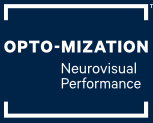As you are reading this text, your brain is controlling how the incoming information is processed, and how your eyes track, coordinate, and focus. Post Trauma Vision Syndrome refers to deficits in these areas after a concussion, head-injury, whiplash, or mild traumatic brain injury (MTBI). If you have PTVS and your eyes do not work together efficiently, you will have a hard time sustaining your attention and may even end up with a headache or migraine. Problems with inaccurate eye tracking may cause you to mix up the information, or feel like you struggle to comprehend it. It has been common to think about “vision” as just seeing clearly and the physiological health of the eye itself, with almost no attention given to how accurately or efficiently the system works. The paradigm is now shifting as we understand the importance of the neurological role in eye coordination and information processing, during the last few decades. With over 50 per cent of the brain involved in the visual function, PTVS is commonly responsible for ongoing symptoms after trauma.
What is Post Trauma Vision Syndrome?
Post Trauma Vision Syndrome is caused by damage to regions of the brain that are involved in various aspects of visual function. This disrupts the stored “programs” for how the visual system functions. This damage occurs on the axonal level and often escapes detection by medical imaging. PTVS encompasses more specific diagnoses like egocentric visual midline shift, ocular motor dysfunction, binocular dysfunction and more.
What are the effects of Post Trauma Vision Syndrome?
Post Trauma Vision Syndrome may affect one or more specific areas of visual function, so the effects can be varied. PTVS can affect one’s ability to read, comprehend, and sustain attention. It can also cause dizziness/vertigo and headaches/migraines.
Reading:
If you were a marathon runner who sustained an injury that disrupted the coordination of your legs, it would be understandable as to why your running was suffering even if you were physically healthy and in great shape. It would also be understandable as to why you would not be able to run for as long as before. When PTVS causes problems with eye tracking and how the eyes are working together it will impact a person’s reading abilities and how long they can sustain the process. If it becomes difficult to control eye coordination, the reading comprehension will also drop. This challenge is similar to how hard it is to hold a conversation when you are learning to drive a manual transmission, as all your conscious ability is directed towards just trying to do it. Vision dysfunctions that affect reading can also indirectly affect any other testing involving reading.
Vestibular, proprioceptive (information from muscles and joints), and visual information all need to accurately integrate together. PTVS causes the visual system to feed “garbage” into this collaboration, which will prevent proper integration often causing the person to plateau with vestibular rehabilitation. Unfortunately, this has led to accusations of malingering when there was truly an unidentified vision problem preventing the rehabilitation. Often in an assessment, there are lenses (glasses) that can be put on a person that change their perception of physical space, dramatically improving their balance and symptoms immediately. It is also possible to mimic some of these problems in someone who has normal visual function by reversing the process.
Headaches/Migraines:
Vision dysfunction after an injury can result in a litany of headaches and migraines often associated with computers, reading, busy visual environments, and other visual stimuli. Using a high contrast black and white grid (Visual Aliasing test)and gauging the person’s reaction to it, is a great way to determine whether the visual system is a playing a role in these symptoms. Inefficiencies with how the eyes coordinate will produce situations that make it difficult for a person to sustain attention, which creates a confounding variable for a lot of testing.
Other Areas:
PTVS can also cause difficulties with tracking moving objects and make stationary objects appear to move. It can create general fogginess, difficulty concentrating on tasks such as conversation (as the brain is using most of its resources on vision), light sensitivity, and even sensitivity to sound. It is as though most of the brain’s processing power is caught up in trying to make sense of the visual information, so there is less to allocate to other areas of function.
How is Post Trauma Vision Syndrome treated?
Similar to vestibular problems after a concussion, PTVS requires rehabilitative efforts centred around re-establishing the areas of affected visual function. Particular types of prescription lenses can improve the efficiency of visual function and how an individual processes depth and space. Treatment time can range from weeks to more than a year, and the neurological changes are permanent. Treatment for PTVS is commonly coordinated with other professionals.Most eye examinations concentrate on acuity and the physical health of the eye. It is important that you ask your eye care professional if they can test for Post Trauma Vision Syndrome and the specific areas of visual function commonly affected.
